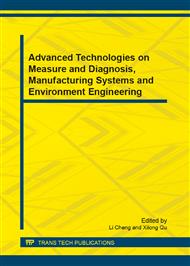p.461
p.467
p.472
p.478
p.483
p.488
p.493
p.497
p.503
Self-Adaptive Control Synchronization Research of Double Exciting Motors
Abstract:
Based on the single-mass nonlinear vibration system that driven by double exciting motors, the harmonic vibration adaptive control synchronous strategy for the double exciting motors had been designed in the paper. Based on the motion feedback of the double exciting motors to adaptive modify the control parameter of the synchronization controller, make the multi-exciting motors to realize the angular speed equal and phase difference constant synchronous movement. And during the synchronous motion process, adjust the adaptive law to improve the synchronously motion stability margin. The simulation experiments had been carried out based on the simulation model that established in the paper and the experimental results showed that the harmonic vibration synchronization control strategy can achieve satisfactory control accuracy and robustness.
Info:
Periodical:
Pages:
483-487
Citation:
Online since:
June 2013
Authors:
Keywords:
Price:
Сopyright:
© 2013 Trans Tech Publications Ltd. All Rights Reserved
Share:
Citation:


